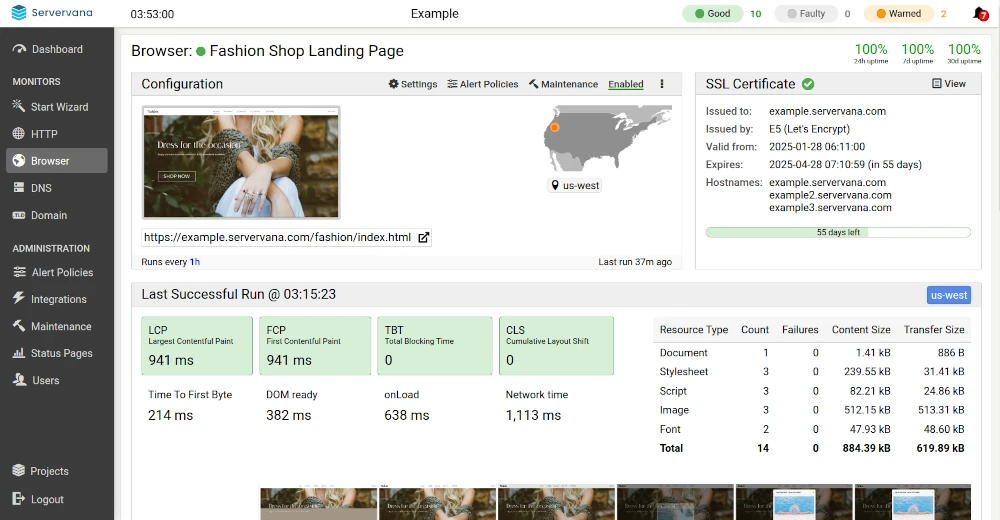Browser-based monitoring

Uses an actual browser to access your page. Instant insight into how your page is loading.

- Visual breakdown of the loading process.
- Waterfall report detailing all loaded resources.
- Timing details for each step of a request (establishing connection, waiting for data, etc).
- Captures and reports Core Web Vitals (SEO-affecting metrics).
- Multiple geographical locations available as the origin of the tests.
- Historical view of the data, which allows inspection of prior tests.
- 1 hour minimum interval between runs.
Because it loads the page using an actual browser, with javascript and everything else enabled, it can provide essential timing information that define the user experience. More precisely, it tracks the Largest Contentful Paint (LCP) timing, which is a SEO-affecting metric and is considered to represent the time when the main content of the page has finished loading; Total Blocking Time (TBT), which provides an indication on how responsive a page feels; and Cumulative Layout Shift (CLS), which measures how much a page's layout is shifting while it's loading. More on Core Web Vitals.
On top of this, the Browser monitor is able to alert you when external components (like carts, payment processing scripts, fonts, etc), fail to load.
- Error-free loading of the main page and all of its resources.
- Inherent SSL validity check.
- SSL expiry with configurable warning interval.
- Total load time check with configurable threshold.
- onLoad time check with configurable threshold.
- DOM ready time check with configurable threshold.
- TTFB check with configurable threshold.
- Largest Contentful Paint check with configurable threshold.
- Cumulative Layout Shift check with configurable threshold.
- Visual difference check with configurable threshold.
- Full webpage monitoring.
- Web Vitals monitoring.
- Load-time monitoring.
- Uptime monitoring.
- SSL monitoring.
- Defacement monitoring.
Visual change detection and defacement monitoring
Websites do get hacked, so defacement monitoring is a must-have tool. Our system can easily detect and alert you when unauthorized changes are made to your page, helping you protect your reputation and reducing losses.
